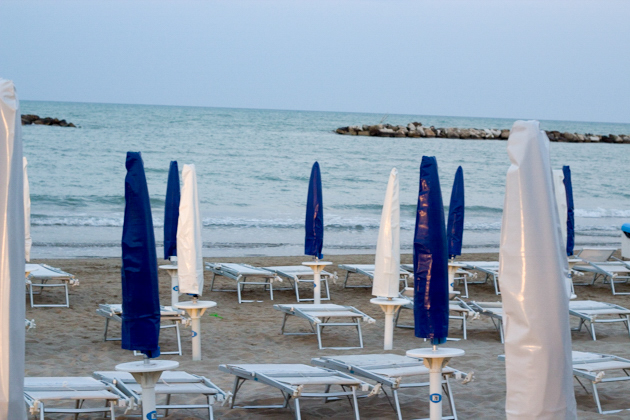
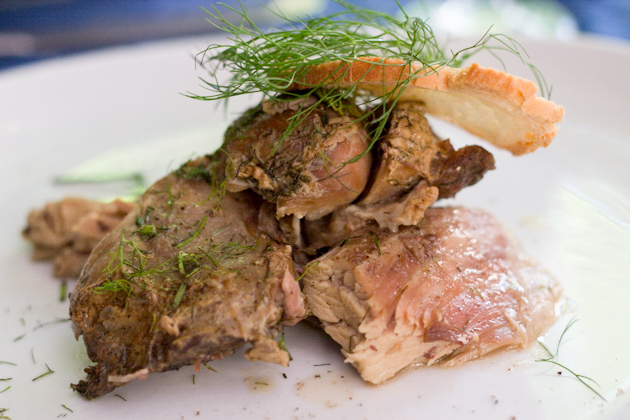
Porchetta (roast pork)
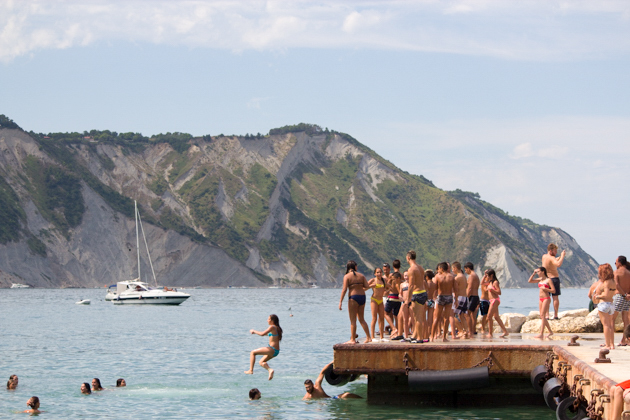
The pier and beach in front of Il Molo
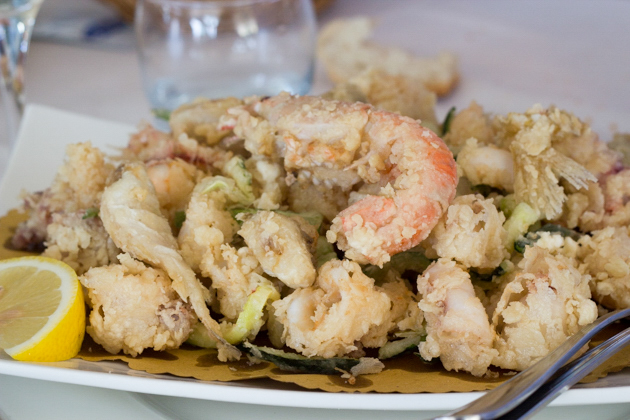
Il Molo‘s fritto misto (mixed deep-fried seafood)
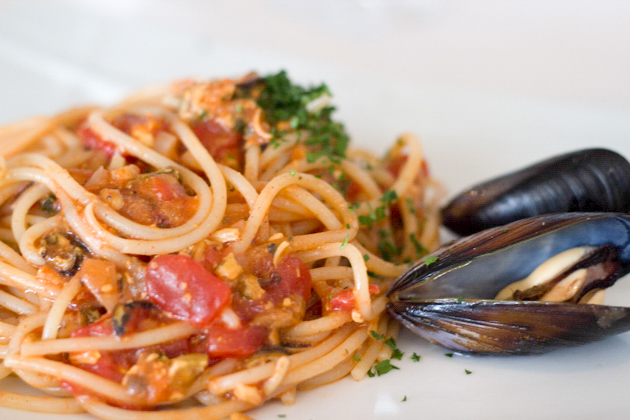
Spaghetti with local mussels
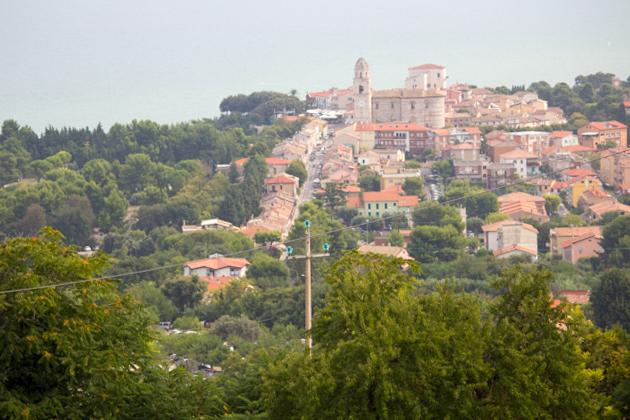
Sirolo
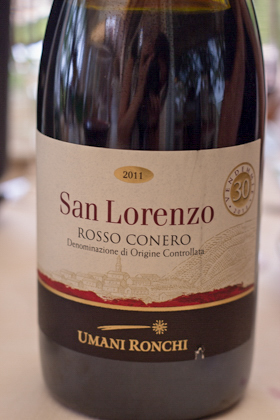
San Lorenzo Rosso Conero 2011, Umani Ronchi
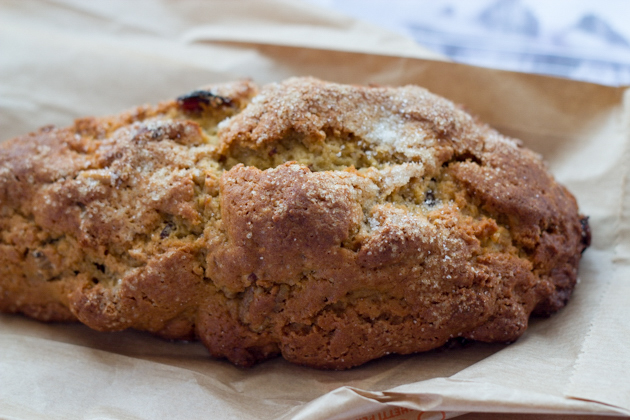
Tozzetto al rosso Conero (a biscuit-like cake made from red wine from Conero, raisins, almonds and walnuts)
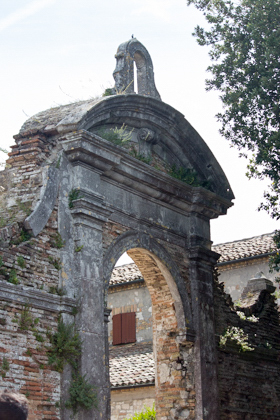 Hotel Monteconero Badia San Pietro |
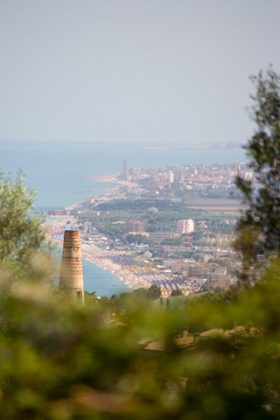 View from Monte Conero looking south |
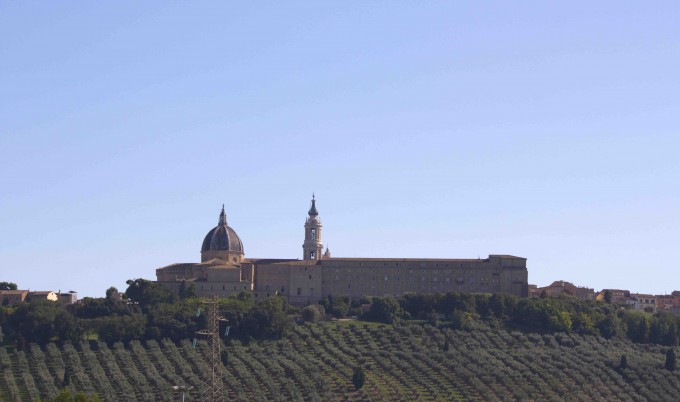
Loreto
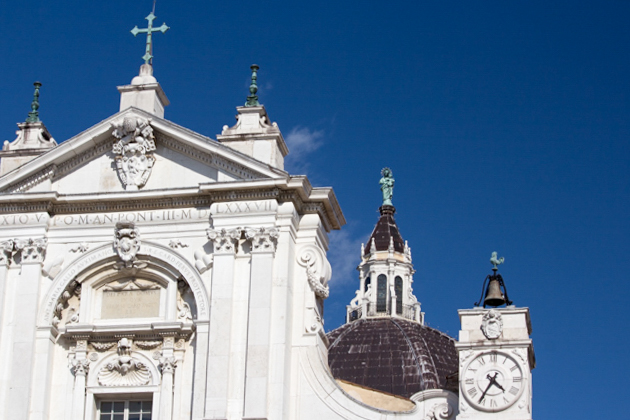
Basilica of Santa Casa
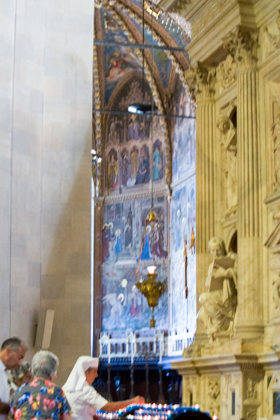
The Holy House
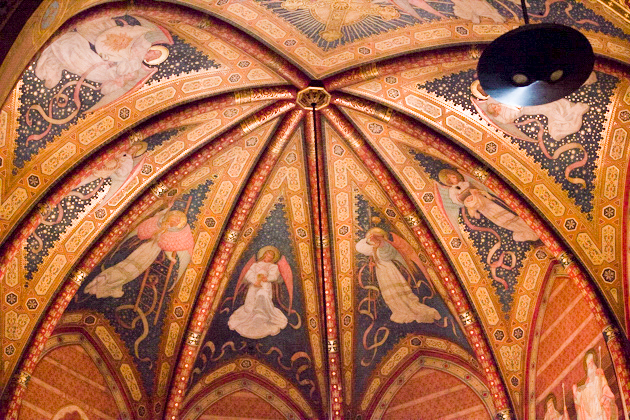
Inside the basilica of Santa Casa
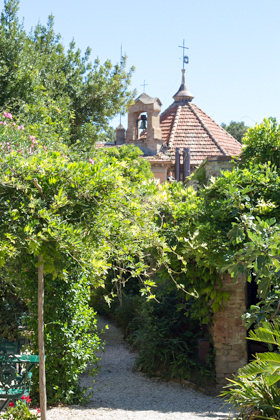
Villa Giulia
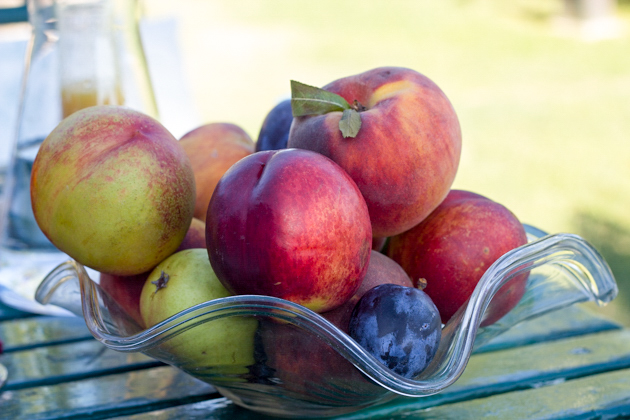
Chilled fruit to welcome us on a hot day
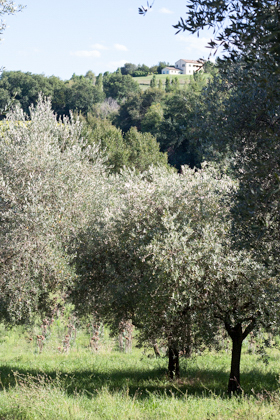
Olive groves leading down to the pool
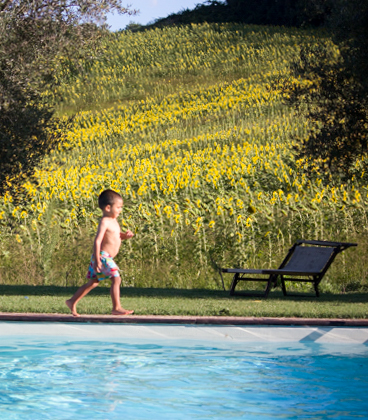
The pool
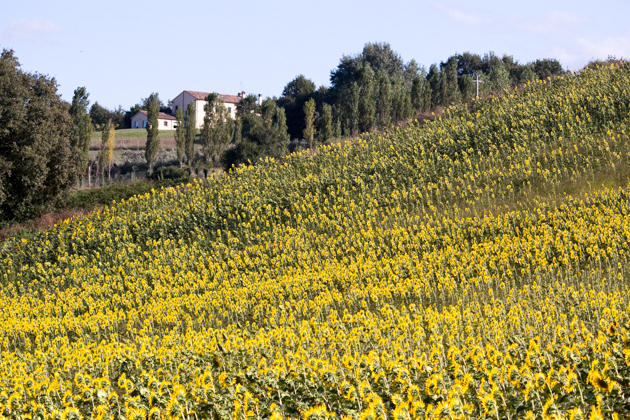
Poolside sunflower fields
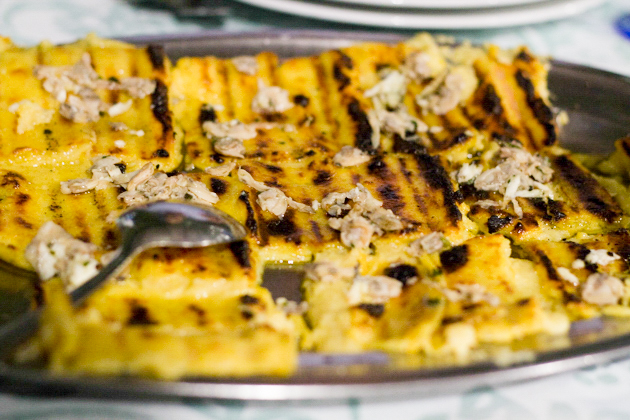
Da Maria‘s grilled polenta with clams
Da Maria only opens when fresh fish is available that day from the Adriatic and is cooked over a charcoal fire. They only serve fish, use local organic products when possible and never use frozen or farmed ingredients. The results are fantastic. As the ingredients are sourced daily there is no menu, dishes are served as they are made.
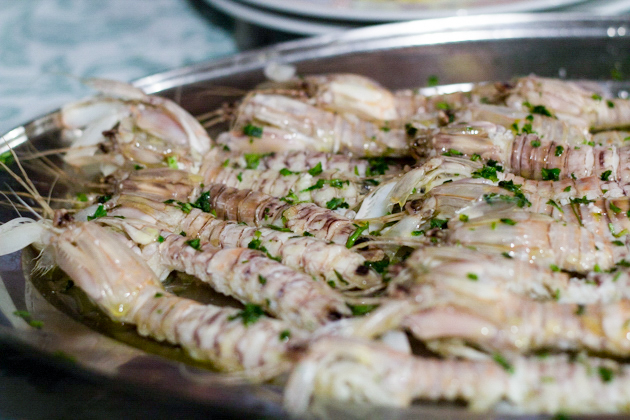
Lightly cooked mantis prawns with olive oil and parsley
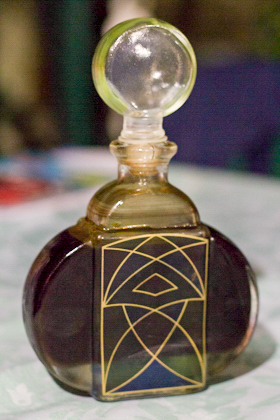
Liquirizia
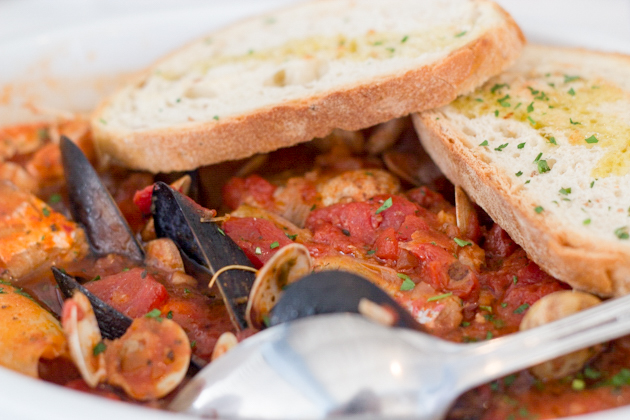
Il Molo‘s brodetto (fish and seafood stew)
Recipe:
Brodetto marchigiano (fish and seafood stew)
40 mls extra-virgin olive oil, plus more for drizzling
1 medium onion, skinned and finely chopped
2 garlic cloves, skinned and finely chopped
50 grams flat leaf Italian parsley, leaves removed, washed, dried, and finely chopped
750 grams tomatoes, coarsely chopped
1.5 kilos mixture of white fish (such as cod, sole, mullet, turbot, monkfish, scorpion fish, sea bass, eel, snapper, grouper, gurnard or flounder), cleaned, scaled, and cut in thick tranches (smaller fish can be left whole); cuttlefish (cleaned); squid (cleaned); mantis prawns; langoustine; prawns; and clams (soaked in cold water and rinsed a few times, shells scrubbed) – heads, tails and bones reserved
40 mls wine vinegar
Sea salt
8 slices of fett’unta
To visit:
Fano:
Da Maria
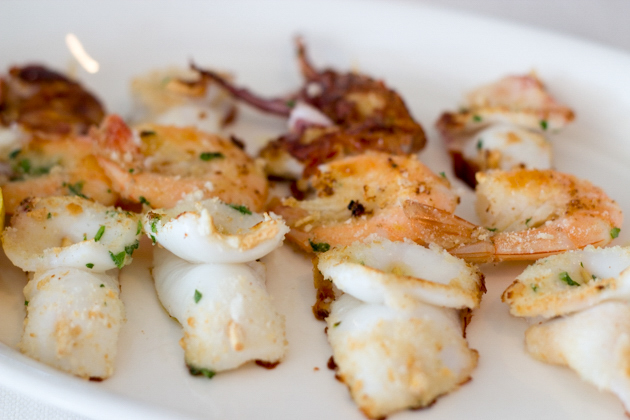
Spiedini di calamari e gamberi (grilled brochettes of calamari and prawns)
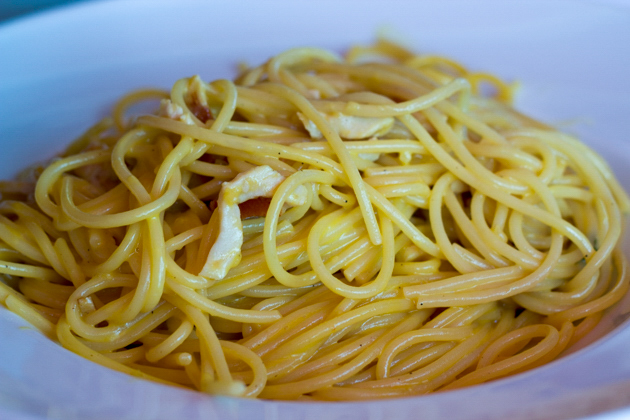
Carbonara di pesce spada ( spaghetti with swordfish and creamy egg sauce)
Il Molo
Drink:
Hotel Monteconero
Stay:
Near Fermo:
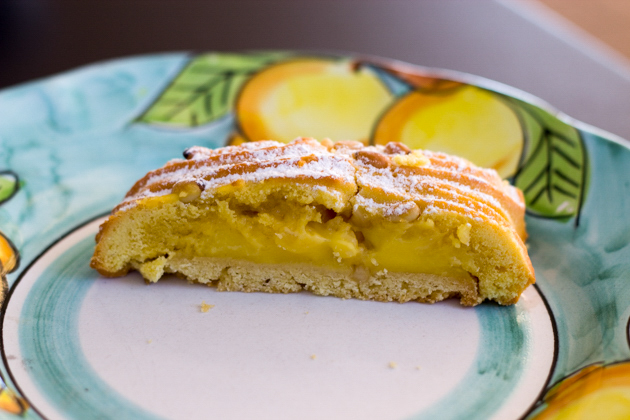
Homemade cakes at Villa Giulia
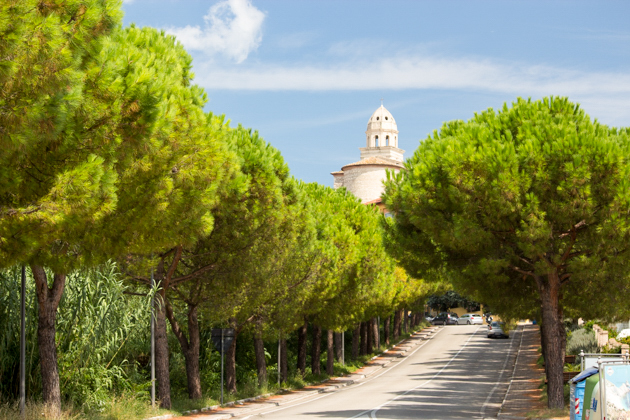
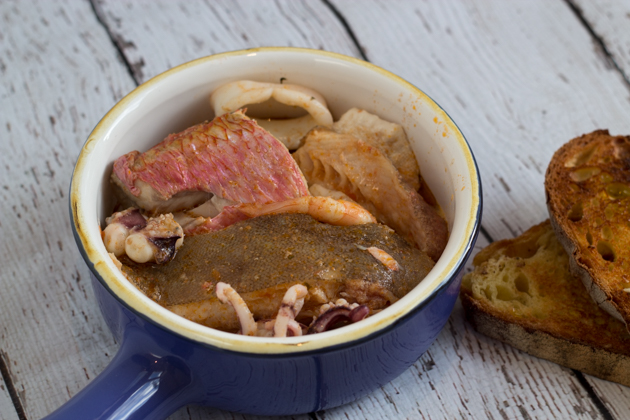
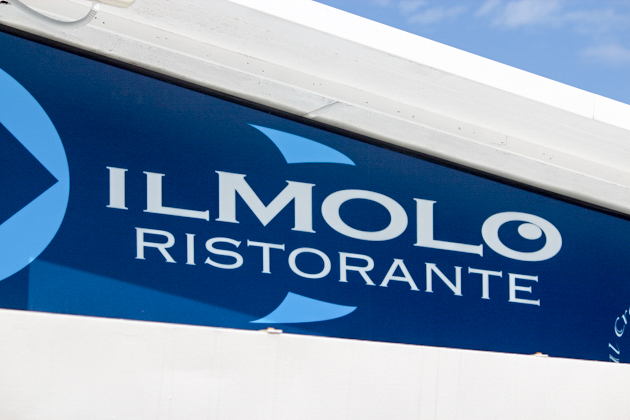
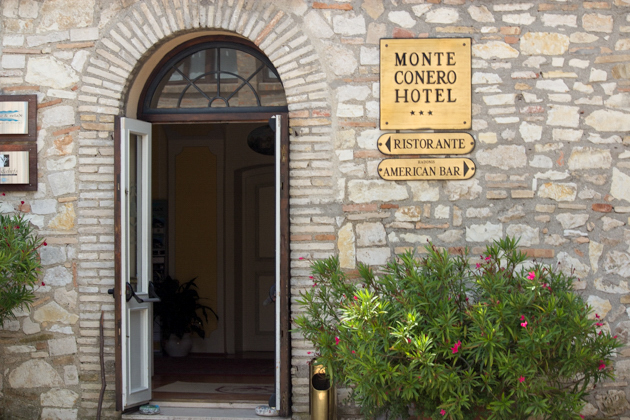
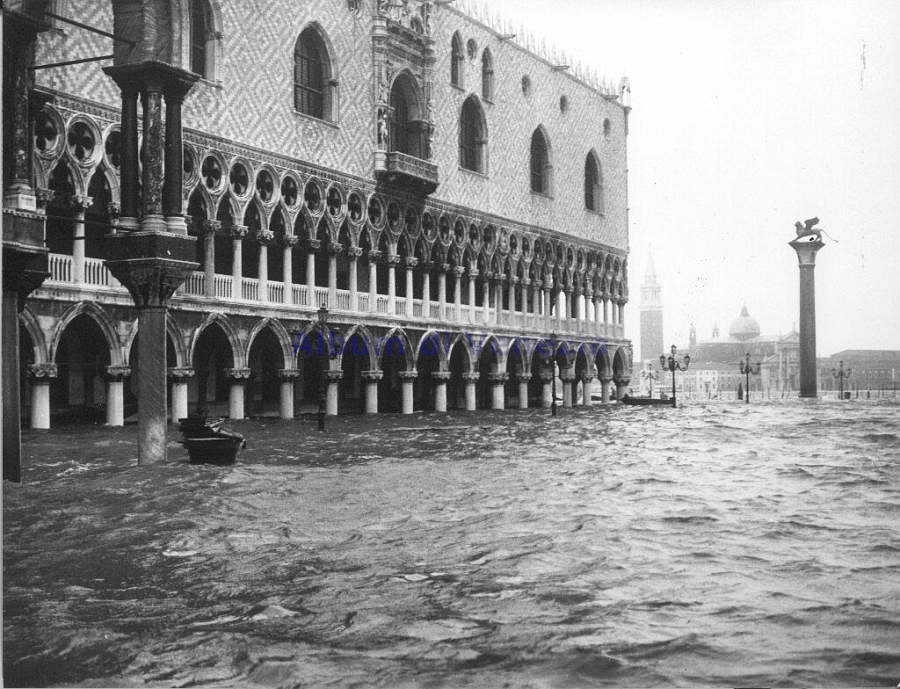
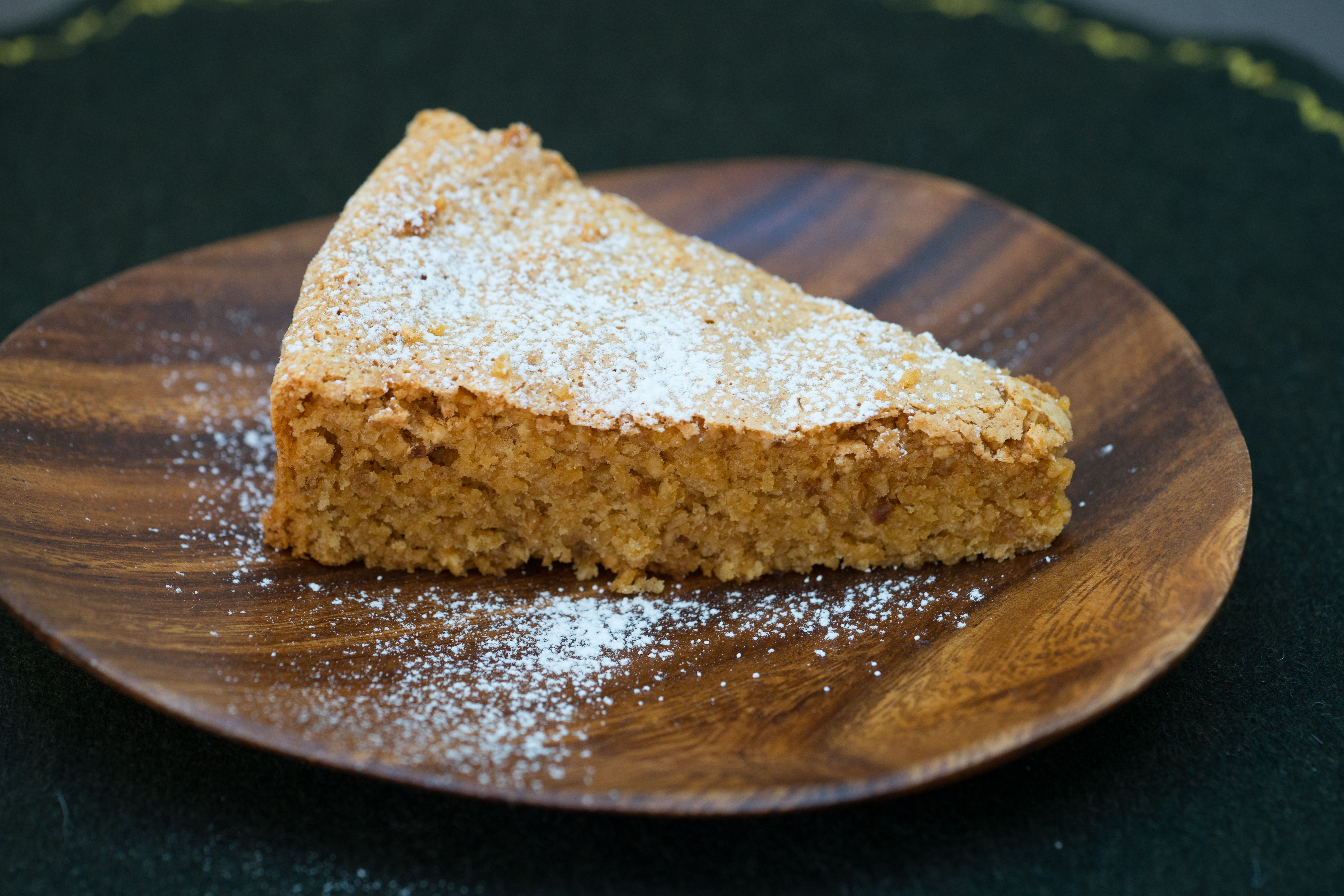
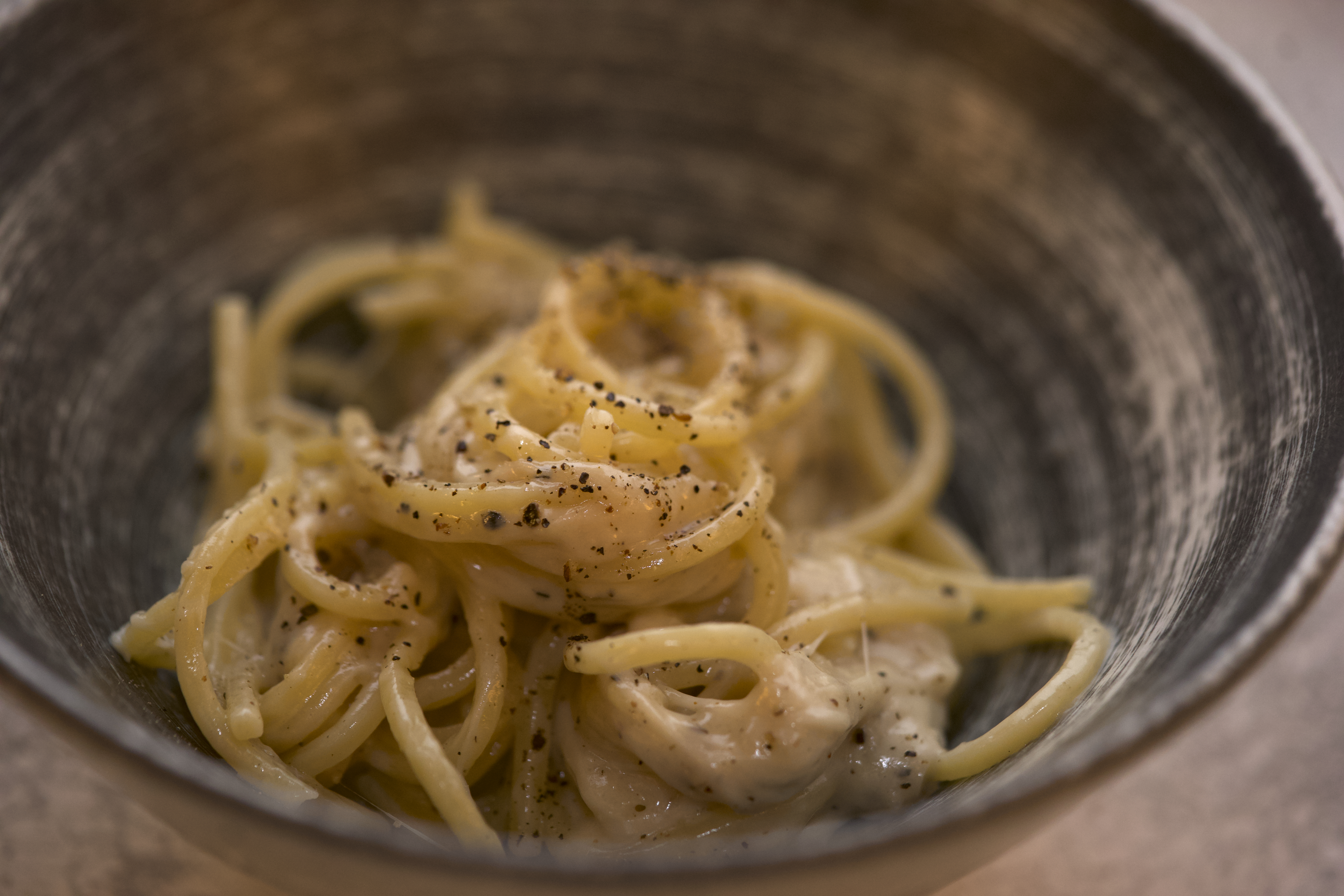
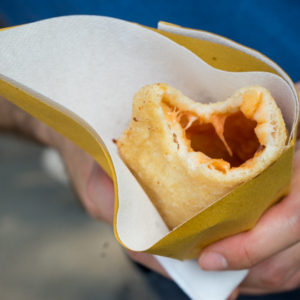
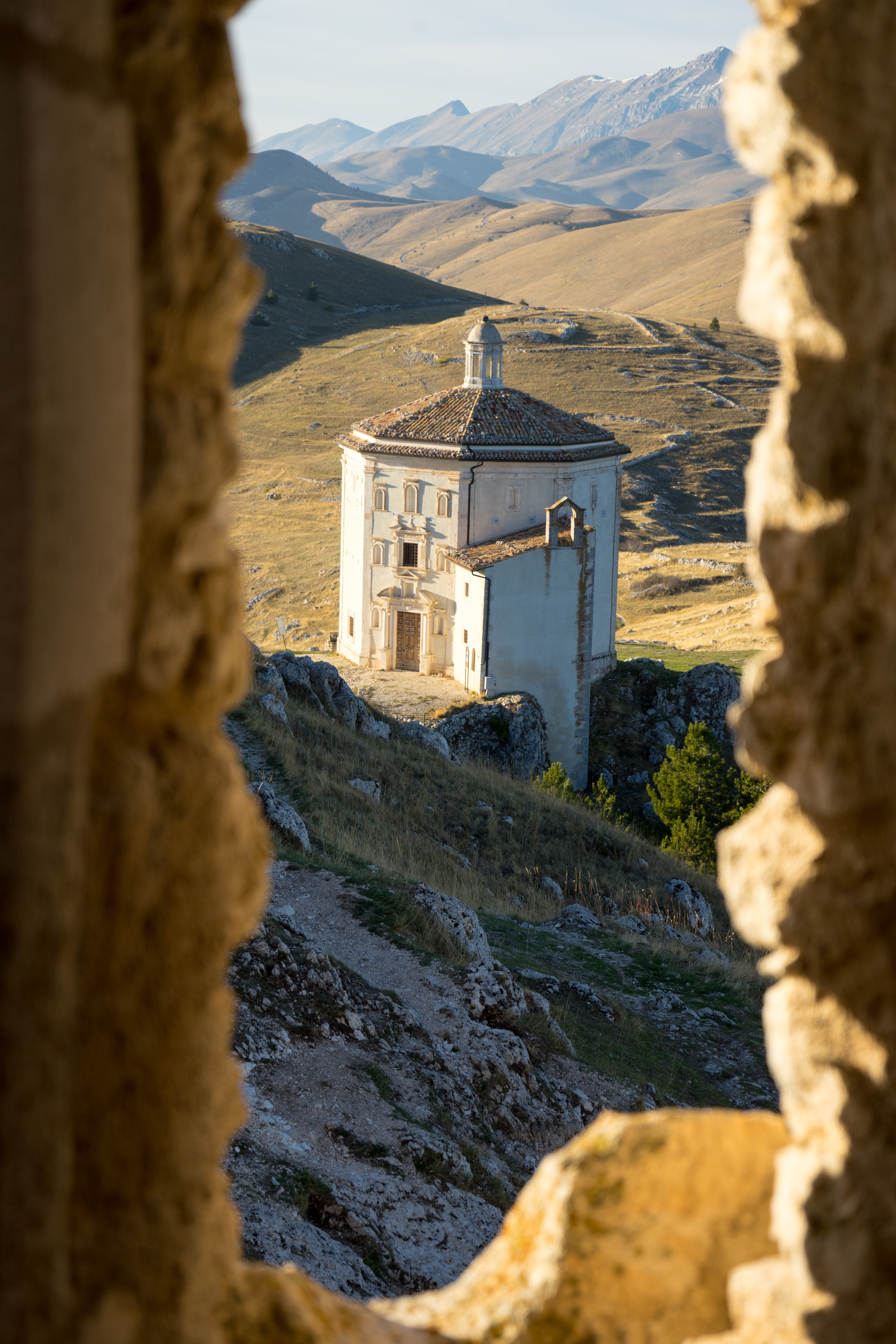
What a great, informative article about our coastline. We fell in love with Le Marche 14 years ago and bought and restored our beautiful “Hideaway” farmhouse here near Amandola and totally agree there are some wonderful places here. Our nearest coastal national park is the “Conero” which really is a stunning spot. The whole region still remains very undiscovered and unspoilt.
We have spent many happy times on Portonovo beach eating some of the very best mussels in the world. Here is one of the few places they grow wild and can be bought right on the beach. For another wonderful dining experience try Da Silvio near Sirolo, were you are perched high on the cliff overlooking the stunning blue waters and pine forests. After a very long, lazy lunch, crash out for a snooze on the beautiful beach below.
The area can easily be reached with flights from the Uk with Ryanair to Ancona and Pescara and with the new road opening soon, Perugia airport will be less than an hour and half too.
There is so much to see and do both on the coast and also further inland towards the stunning Sibillini National Park. If you are looking for holiday accommodation whilst coming to stay in the area, marcheownersdirect.com are a group of like minded holiday home owners who have been living in this wonderful region and have years and years of experience and tips of where to visit and explore. They are a non-profit co-operative and work together to bring you the most unbiased holiday experience.
Between them they have farmhouses and apartments, boutique hotels, agriturismos and bed and breakfasts and love talking about and sharing advice about visiting the stunning area.
Sarah and Mark hideawaylemarche.com
Hi Sarah and Mark, We will definitely try that for holiday accommodation and Da Silvio for a meal next time we are in Le Marche. It truly is a stunning part of Italy and our kids really enjoyed their time there. Thanks for the tips! Janet